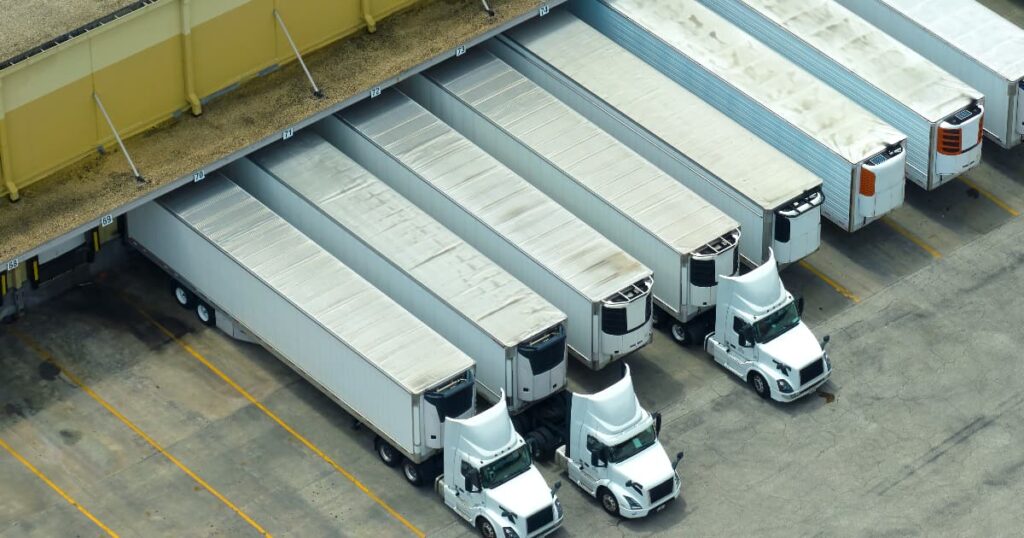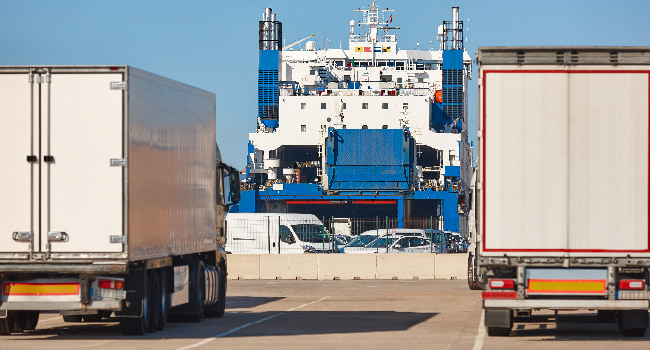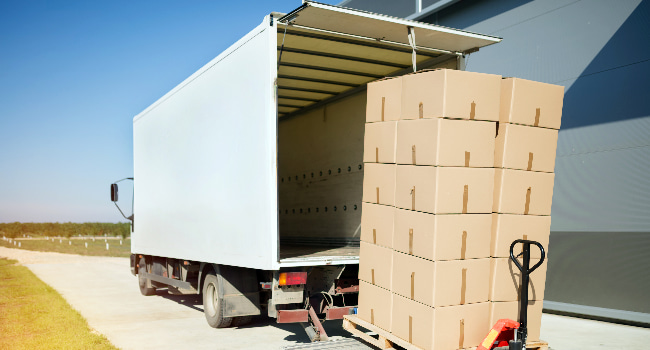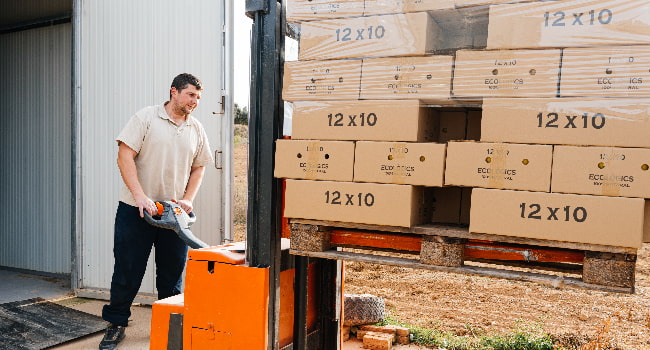A1 Quality Logistical Solutions

- By Haley
- June 17, 2025
Table of Contents
Key Highlights
- Efficient logistics is achievable by employing backhaul strategies, maximising fleet utilisation and reducing empty miles across transportation networks.
- Tracing the evolution of backhaul within supply chain management reveals its impact on logistics operations over time.
- Various modes of backhaul—FTL, LTL, and reverse logistics—offer unique benefits for transportation services.
- Cutting-edge technologies like fleet tracking, telematics, and route optimization software ensure operational excellence.
- Practical methods such as collaborative logistics and dynamic scheduling deliver measurable cost savings while enhancing system efficiency.
- Addressing challenges like load matching, route planning, and shipper-carrier collaboration bolsters logistics management capabilities.
Introduction
Backhaul in logistics operations is key to making supply chain management better. By using transportation services in a smarter way, companies can avoid empty miles. This helps them use their fleets more and lower shipping costs. It turns parts of the business that are often ignored into ways to make money. Both small and large order moves can get better with good backhauling. This way, no route is wasted. In this blog, you will see how getting good at backhaul strategies can change logistics operations. It can also make transportation services better for cost savings and for the environment.
Understanding Backhaul in Logistics
Backhaul processes are an important part of transportation management. When businesses and logistics providers set them up the right way, they can improve the supply chain. This be a good way to help logistics providers boost efficiency and lower costs that are not needed.
When backhaul first came to be, the goal was to make logistics operations better. Now, backhaul has become something businesses need if they want their logistics operations to last and keep up. Today, many logistics providers use new transportation management systems to set up strong backhaul strategies. This part explains what backhaul is, how it has grown over time, and how it is different from outbound logistics.

Definition and Meaning of Backhaul
Backhaul in logistics operations means using transportation services in a smarter way to avoid trucks coming back empty. It helps save costs and boosts supply chain efficiency. With backhaul, trucks that go back can carry cargo instead of wasting fuel and time without a load.
A good backhaul plan turns trips that used to be empty into useful ones. This takes clear scheduling, good use of truck space, and talking with everyone involved. When you line up routes and plan well, you can make the most of your fleet. Logistics providers use backhaul ideas to handle warehouse operations and keep supply chain work smooth. Doing this helps them make more money and keeps customers happy.
To bring backhaul into their work, businesses need strong data systems. These help spot trips back to base and pair them up with loads that need to travel. Because of this, backhaul leads to better use of trucks and drivers. It also lowers transportation costs in a big way and supports the whole supply chain.
The History and Evolution of Backhaul
Backhaul started in the United States alongside the rise of supply chain management and shipping logistics. In the past, shipping routes mostly aimed to send goods out, but did not put much focus on using the return trip back. This led to a lot of waste and not very good use of trucks and other shipping ways.
That changed after the 1980 Motor Carrier Act. Trucking companies looked for new ways to be better than others. They wanted to make their supply chain more competitive and use backhaul ideas more. Freight forwarders and people working with warehouse operations saw how backhaul could make things better. It helped bring down shipping rates and made their work easier.
Over time, with new technology in logistics, backhaul ideas got bigger. GPS and up-to-date warehouse operations helped companies choose the best routes. Now, shipping logistics can use these systems to bring in more money and avoid empty trips back. The growth of ecommerce also helped backhaul become important. Just about all supply chain management models that look to the future now use backhaul to work better and be more useful for people.
Key Concepts: Primary Haul vs. Backhaul
Primary haul and backhaul are important parts of outbound logistics. They have different business models and ways they work. Primary haul is about getting customer orders out. It moves goods from the supplier to the customer or to warehouse locations. Backhaul uses trips that would be empty anyway. It takes cargo back on the return journey.
Aspect | Primary Haul | Backhaul |
Function | Delivers customer orders straight away. | Uses trips back for better use. |
Warehouse Management | Takes care of stock moving out. | Helps move stock to other centers. |
Cost Implication | Costs more because routes are set for jobs. | Saves money by making full use of trucks. |
The main job of primary haul is to fill customer orders on time. Backhaul shows great use of resources. It uses the time and space of trucks that would go back empty. Both of these ways help a supply chain be more efficient. They do not just deliver products. They also help reach great results in operations. Warehouse management and order fulfillment become smoother when those models work together in outbound logistics.
The Importance of Backhaul for Fleet Optimization
Efficient backhaul systems bring a real change to how people handle transportation management today. When logistics companies use their fleets better, they get big cost savings. This way, they also make sure the whole fleet works well, with no waste.
Backhaul strategies do more than just help with saving money on the job. These ideas help clear up some of the steps people have to follow in supply chain operations. This makes logistics services work better and brings in more profit. At the same time, this helps the world by making things work in a cleaner way. The next parts will talk in detail about its impact on the supply chain. You will see how it cuts down on empty miles, brings down costs, and gives more good things like making the logistics sector better for the environment.

How Backhaul Reduces Empty Miles
Empty miles happen when transportation services do not use trucks well on return trips. Backhaul is a direct fix for this problem. It helps cut down miles that do not bring value and lowers waste in the supply chain.
By looking at the location of each warehouse and planning order processing with logistics companies, backhaul gets rid of empty trips. Good warehouse management and smart planning let companies spot chances to carry return loads. This makes empty miles go down by a lot.
When backhaul plans work well, shippers and carriers can work together better. Everyone matches transportation services to open shipments, so runs that used to be empty now earn money. Fewer empty miles bring down costs and support sustainability in the supply chain.
Impact on Operational Costs and Profitability
Backhaul strategies help logistics providers cut shipping costs. This way, they save money and waste fewer resources. Trucks carry goods both ways—on the headhaul and the backhaul—making every trip count. All this brings down everyday costs.
Adding backhaul to transportation management makes sure that investments are used for maximum efficiency. By getting the most from their trucks, logistics companies do not have to spend extra money on fuel, workers, or repairs. Moving goods in the backhaul steps also makes supply chain operations run smoother.
When backhauling systems are used the right way, profits can go up. E-commerce businesses and other owners may spend the money they save on better inventory management, smarter shipping, and improving customer satisfaction to keep growing.
Environmental Benefits of Effective Backhauling
Sustainability is key to good backhauling. When logistics providers cut down on empty miles, they use less fuel. This helps them have shipping plans that are better for the environment.
Warehouse management and smooth work in operations help with cutting down the carbon footprint. Logistics companies, if they choose to use sustainable ways, also help ecommerce businesses. Growth of ecommerce is fast, and people want quicker shipping that still cares about the environment.
Transportation services that use backhaul can help protect nature. They let companies make better choices that are good for it. When businesses match their shipping rates to green rules, they can make money and do what is right for the planet at the same time.
Types of Backhaul Operations
There are different types of backhaul operations in reverse logistics. These help in making transportation services smoother. Full Truckload (FTL) and Less-than-Truckload (LTL) have their own roles in getting the most out of logistics services.
Reverse logistics comes in to help send goods back without any trouble. These plans help make warehouse management quick and flexible so it can meet different inventory needs. Each type is used for one main goal. This helps logistics providers do what is needed for the supply chain. Keep reading to learn more about these types.

Full Truckload (FTL) Backhauls
Full truckload (FTL) backhauls are a smart way for logistics companies to make the most of their trucks and save money. By planning routes that include a backhaul, companies can cut down on empty miles. This helps a lot with supply chain and supply chain management. Using good logistics operations means you can provide better customer service because deliveries happen on time.
This also leads to big cost savings since every truck can carry more during each trip. Many logistics companies use strong warehouse management systems. These systems help keep track of inventory levels, make order fulfillment faster, and keep everything running smoothly. All of this puts together a better, more effective way to handle logistics and keeps both the company and customers happy.
Less-than-Truckload (LTL) Backhauls
Including less-than-truckload (LTL) backhauls in logistics operations can help a business save money and work better. When you use shared freight space, you pay less to ship your items and can make the most of your transportation services. LTL backhauls let logistics providers put different customer orders together. This helps plan routes better and manage inventory in an easier way.
This method makes shipping logistics smoother and fits with new trends in supply chain and supply chain management. So, companies can send out orders faster and fill them better, which is good for customer satisfaction. Using smart LTL strategies in your business model is very important to reach these goals.
Reverse Logistics and Return Loads
Reverse logistics help move returned items the right way in ecommerce businesses and warehouse storage networks. Keeping customers happy is closely tied to how well you manage returns.
Logistics services that use reverse systems help cut down problems from products sent back. Special steps are there to send the returns either back into your stock or to outside vendors.
When you work with reverse logistics providers, the entire process of returning items works smoothly. This leads to better warehouse operations and better customer service for everyone.
Challenges in Backhaul Management
There are a few main challenges in backhaul management in logistics operations. Planning routes and making schedules can be tricky. It is not always easy to match what loads are there with the space in trucks or carriers. This often leads to fleet resources not being used all the way. There can also be issues talking between shippers and carriers. This may cause people to have the wrong idea of what will happen, or lead to things not going as planned. All these things can waste time and money, leaving trucks moving with nothing in them.
To get maximum efficiency and keep customer satisfaction high, these problems must be fixed. If companies use the right way to do things, they can work around these problems. This helps optimize supply chain operations to make other work better. In the end, this can improve service for people and help reduce the cost that comes from empty trips in the supply chain.

Route Planning and Scheduling Complexities
Efficient route planning is very important for managing full truckload (FTL) backhauls in the right way, but it can be hard. Logistics providers have to think about traffic, customer orders, and time limits to make better delivery schedules. When these things are not done well, shipping costs can go up and customer satisfaction can go down. Problems like road closures or bad weather can also make planning more difficult. By using new logistics operations strategies, a business can make its order fulfillment better. This also helps to use fleet trucks in the best way and cut down on miles with empty trucks.
Matching Loads and Capacity Effectively
Effective load and capacity matching helps make logistics operations better. It helps to cut costs and boost service levels. In this process, advanced algorithms and analytics in transportation management systems are used. These tools help to predict what capacity will be available and what the demand will be. Logistics providers match freight needs with the right vehicle types. This match helps use the fleet in the best way and cuts down on empty miles.
Knowing about inventory management and how the supply chain works is key. It lets people make quick changes based on real-time updates. It is important for shippers and carriers to work closely together through each step. This helps the whole distribution network run smoothly. In the end, doing this will lead to better customer satisfaction.
Communication Barriers with Shippers and Carriers
Ineffective communication can slow down logistics operations. It creates gaps between shippers and carriers. These gaps may lead to mistakes about what the load needs. This can mean shipment delays and higher shipping costs. When updates do not come on time, the fulfillment process can get off track. This often affects customer satisfaction in a bad way. Using streamlined channels, like quick chat tools or collaborative platforms, can help logistics providers share real-time updates. This will make things more clear for everyone. It will also help build stronger connections between people in the supply chain. When there is good and clear communication, logistics providers can work together better. Coordination and efficiency go up, which leads to better service and smoother backhaul operations. In the end, it helps the whole supply chain work well.
Technologies Powering Efficient Backhaul
Today, there are many new tools that help make backhaul work smoother and faster for supply chain and logistics operations. Route optimization software helps with good planning so transportation services match the space that is there. Real-time load matching platforms help logistics providers connect shippers with carriers right away. This helps lower costs and improve customer service. Telematics tools and fleet tracking watch how the vehicles and drivers are doing. This gives a way to spot and fix problems. These improvements make it simple for businesses to handle supply chain operations better. They cut down on empty trips and help give greater customer satisfaction.

Route Optimization Software
Modern logistics operations improve a lot with route optimization software. It helps make supply chain work better and saves both time and money. These systems use real-time data to help logistics providers make smarter choices about routes. This leads to fewer empty miles and lowers transportation costs.
The software looks at many things to pick the best route. These include traffic, delivery times, and the load each vehicle can carry. It helps make sure the fleet gets used in the best way. Using route optimization boosts how well logistics providers work and also makes customers happier. Faster deliveries help increase customer satisfaction.
If you own a business in logistics, having this software gives you an edge over others. It is now a must in today’s fast-changing supply chain marketplace. Integrating these solutions helps businesses keep up and stand out.
Real-Time Load Matching Platforms
Real-time load matching platforms change the way logistics operations work. They make things faster and help teams respond better. These systems use smart algorithms that quickly find the right carrier for every shipper. This helps move freight in the best way. They look at things like how much space is available, location, and shipping costs. With all this, they make the matching process simple, keeping the supply chain moving.
There is less time when trucks go empty, so the fleet is used better. This also means more orders are filled on time. Both shippers and logistics providers get more visibility in their process. This ensures orders are delivered on time, giving greater customer satisfaction. These platforms also lead to cost savings. Over time, there is a stronger supply chain and businesses become more competitive because of better order fulfillment and higher customer satisfaction.
Telematics and Fleet Tracking Solutions
Improving how things run each day depends on using telematics and fleet tracking tools. These give you real-time updates, so you know where the vehicles are, how much fuel they use, and how the drivers do their jobs. When you use GPS data and information, logistics providers can know the best routes, which helps them cut down on empty trips and lower costs. Using these systems in supply chain management also makes inventory management and order fulfillment better, which means everything can be delivered on time and there is greater customer satisfaction. Because of this, businesses can make logistics operations simpler, service gets better, and shipping rates stay competitive as ecommerce continues to grow and change.
Strategies to Maximize Fleet Use with Backhaul
Making the most of your fleet by using smart backhaul plans can really improve logistics operations. When people work together in logistics and share loads, they can use resources better. This way, there is less waste, and profit goes up. With dynamic scheduling and more flexible dispatch, every vehicle can work for longer with less waiting time. If you partner with third-party logistics (3PLs) and freight brokers, you can get more possible loads. This helps match what you have with what people need. All of these things make the fulfillment process run smoother. In the end, you get big cost savings and higher customer satisfaction because everything moves with maximum efficiency.

Collaborative Logistics and Load Sharing
Collaborative logistics offers a new way for companies to get the most out of backhaul trips. When logistics providers, freight forwarders, and shippers work together, they can make transportation services much smoother. This teamwork lets companies improve supply chain operations and use their trucks in a better way. With load sharing, carriers can match up empty trucks with loads that need to be shipped. This helps keep empty miles low. It also helps to save money by making sure every trip counts.
This way of working also helps with inventory management and order fulfillment. Companies can fill orders faster and keep better track of what they have in stock. Customers get their orders on time, which boosts customer service and keeps people happy.
As more businesses move toward this kind of team effort, they will be ready for changes in the market. They can also increase their cost savings and improve how the whole supply chain works.
Dynamic Scheduling and Flexible Dispatch
Dynamic scheduling and flexible dispatch are very important in making backhaul work better. With the help of smart computer systems, logistics providers can use their trucks and drivers in a smarter way, right when they need them. This great way to plan lets everyone involved, such as shippers, carriers, and customers, talk to each other more easily. It also helps with better route planning and can cut down costs. These changes help supply chain management by making it easy for service providers to keep up when things change. Better planning leads to fewer empty trucks, which means more of the fleet is kept busy and there are fewer wasted miles. Using these strategies gives people more of what they want, and helps achieve greater customer satisfaction. This makes the whole supply chain work better for everyone.
Partnering with 3PLs and Freight Brokers
Working with third-party logistics (3PL) providers and freight brokers can make backhaul operations much better. These logistics services help match loads with a bigger network of transportation services, so shipping logistics get easier and more efficient. When you use the expertise of these partners, your business can make the fulfillment process smoother, improve order fulfillment, and spend less on shipping costs. Also, 3PLs and brokers often know a lot about market trends. They can help your company change its logistics operations to keep meeting customer needs. This kind of teamwork, with your supply chain, creates a supply chain that can move and change fast.
Reducing Empty Miles: Best Practices
Maximizing efficiency in logistics operations starts with using some of the best ways to cut down on empty miles. The use of data-driven route planning is important here. When businesses use transportation management systems, they get helpful facts that help them pick better routes. This means trips be more direct, and you get more out of every mile. Building a strong network between carrier and shipper also matters a lot. It helps both sides share their resources better, letting them work together so that logistics services match up with customer orders.
Another important step is to keep an eye on key performance indicators (KPIs) in real time. This helps you keep improving, act fast when demand changes, or when inventory levels go up or down. By putting these ideas into your business, you can save on costs, make customers happier, and tidy up your whole fulfillment process. Using these tips with your logistics operations gives you a real way to achieve cost savings and boost both your transportation management and customer satisfaction.

Data-Driven Route Planning
Using data to plan delivery routes can make logistics operations much better. When logistics companies use smart tools like advanced analytics and machine learning, they can look at old shipping data, traffic reports, and real-time updates like weather. This helps them pick the best routes for moving goods.
With this kind of planning, service providers can make order fulfillment faster and help lower shipping costs. It can cut down on empty miles and help make sure orders get delivered on time. This brings greater customer satisfaction because people get what they order when they expect it. In the end, data-driven steps help businesses change and improve their shipping logistics as things in the world change, too.
Continuous Improvement and KPI Monitoring
Checking key performance indicators (KPIs) often is very important to help make backhaul run better. Using advanced metrics lets people in logistics operations find what needs to get better in the entire process, from order fulfillment to transportation services. Keeping an eye on these numbers helps companies stay in line with their main goals. This helps with cost savings and can make service levels go up. When a business builds a way of always getting better, it can also make customer satisfaction and their whole experience better. This is good for the business model. When groups are able to change along with new needs and improve how they do things, they manage inventory levels better, use their warehouse space more, and cut down on empty miles.
Building a Strong Carrier-Shipper Network
A strong carrier-shipper network is key to making logistics operations smooth and fast for your business. It helps make sure that customer orders are delivered on time. When you work with reliable logistics providers, you can improve how everyone works together in the supply chain. This teamwork makes transportation services better. It also lowers shipping costs because you use more of the space you have.
Good and open communication builds trust between everyone in the process. That is important when there are challenges to face. Also, using new technology helps people share important data. This makes inventory management and order fulfillment easier and more clear for all involved. A solid network helps bring more customer satisfaction and lets your business grow over time.
Conclusion
Bringing backhaul into logistics operations can help save a lot of money and make things run better. When you work on the entire process, like planning routes and matching loads, you can cut down on empty trips. This not only saves you money but also makes your customers happier. Using new tools, like telematics and route optimization software, makes it easier to manage backhaul.
Right now, the growth of ecommerce means it is even more important to understand how backhaul works. If you know how to face these logistics challenges, then your team can make full use of their fleets. This way, logistics providers can give more value and better service to their customers.
Frequently Asked Questions
What is the difference between backhaul and headhaul?
Backhaul is when a freight vehicle makes the trip back after dropping off its main load. It often brings goods back to where it started. On the other hand, headhaul is the first trip from the starting place to the end point. During this trip, the vehicle usually carries a full load.
How can companies identify potential backhaul opportunities?
To find new backhaul chances, companies can look at the routes they already use to see if return trips are possible. They can also use data to match loads with empty space in their trucks. It helps to talk often with shippers and carriers, so everyone knows what is needed. This way, they can use their trucks better and reach maximum efficiency.
Are there specific industries that benefit most from backhaul?
Yes, there are many industries that really get a lot from backhaul strategies. Retail, manufacturing, and food distribution are some of them. These areas use backhauls to save on transportation costs. Backhauls help make the supply chain and logistics operations better and smoother. They lower empty miles. This can lead to better profits and more ways to keep things running well and to help the environment.
How does backhaul contribute to sustainability in logistics?
Backhaul helps cut down empty miles by making return trips better, so there is less fuel use and fewer emissions. By making good use of what is available, logistics companies can boost how well they use their resources. This makes the supply chain more sustainable and brings down the total impact on the environment.

Haley serves as the Marketing Manager for A1 Quality Logistical Solutions. She joined A1QLS in 2023 with her prior experience gained with GXO and XPO Logistics.
